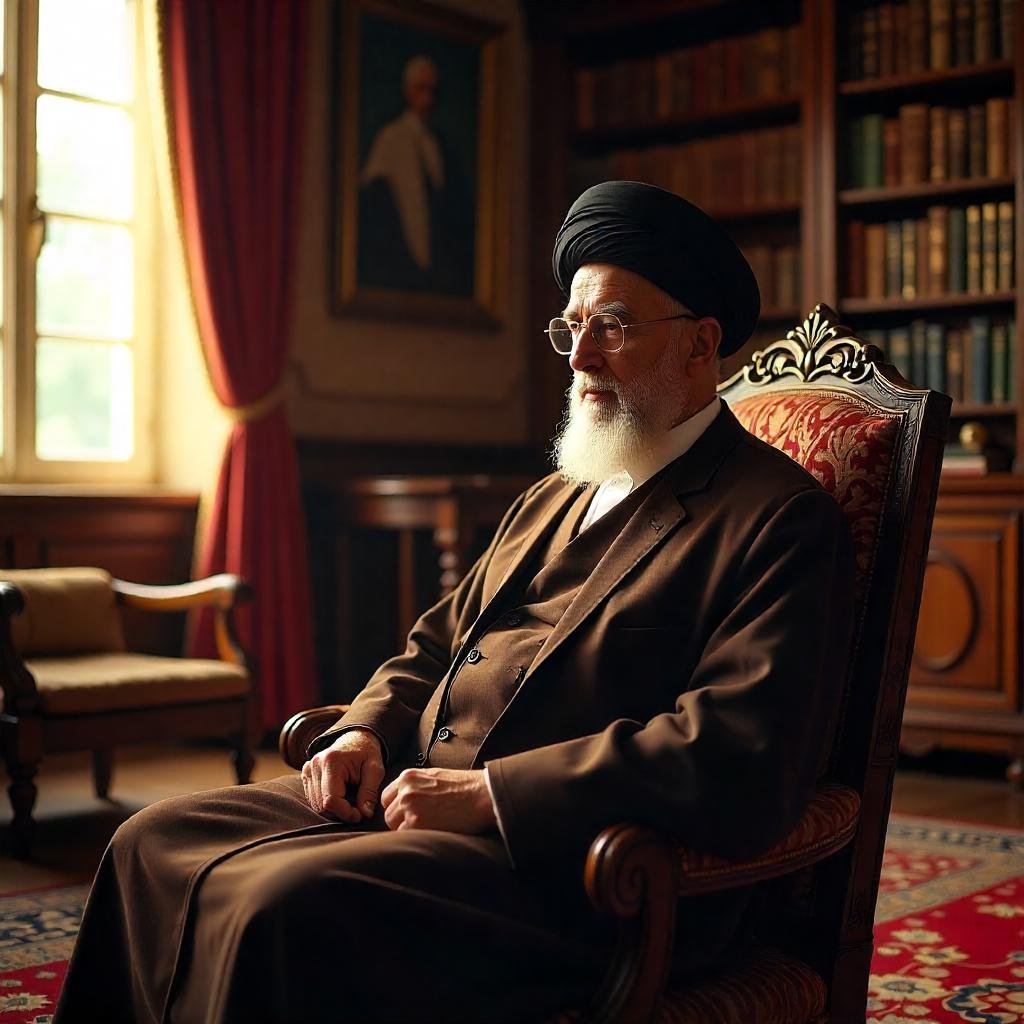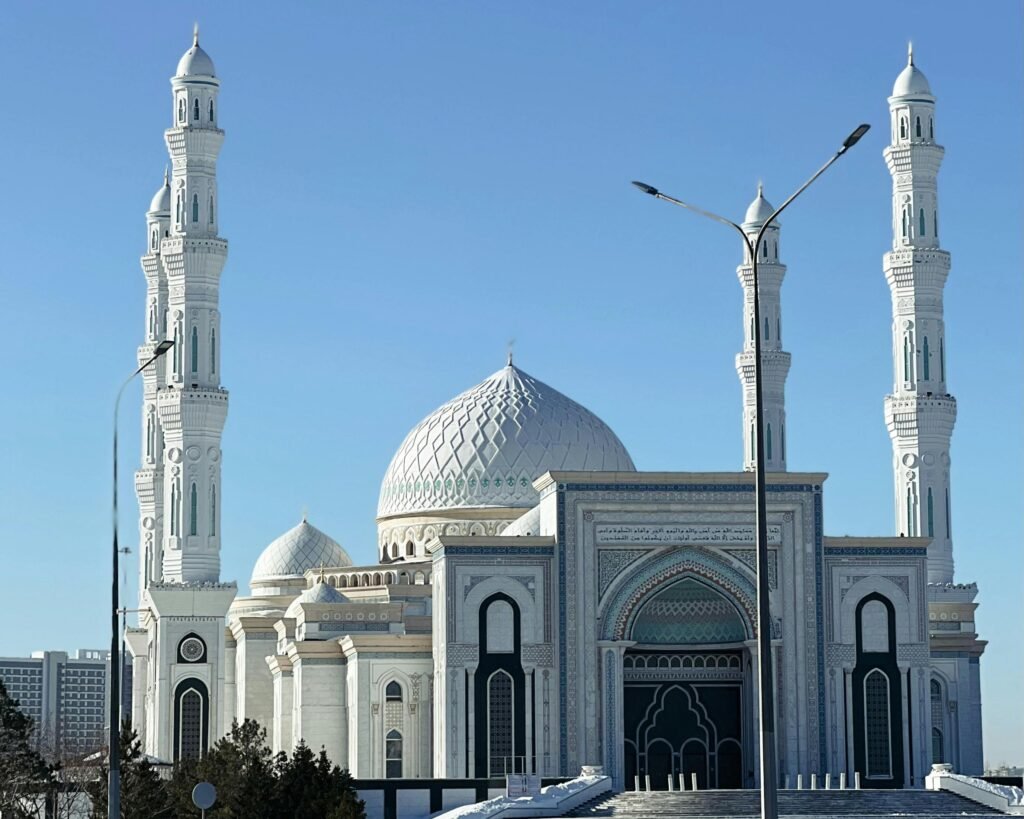Islamic News: This Time Building New Leaders of the Ummah, Name Is Khamenei

The latest Islamic News reverberates across global Muslim communities: a deliberate process to build new leaders of the Ummah, spotlighting Ayatollah Ali Khamenei as a symbolic keystone. This development pulsates with deep significance, signaling a conscious effort to shape visionary, devout, and strategic leadership. In this elaboration, we’ll unravel context, theology, historical lineage, and implications, offering readers robust Islamic Information and insight.
1. Setting the Context: What Is Islamic News Saying?
1.1 Provocative Revelation
Current Islamic News underscores an orchestrated initiative led by Supreme Guide Khamenei to mentor emergent leaders rooted in Islam, steeped in jurisprudence, theology, strategic thinking, and ethical stewardship. This isn’t casual; the intentional formation of a cadre prepared for spiritual, intellectual, and geopolitical responsibility.
1.2 Why It Matters
Such cultivation of leadership resonates with every facet of Islamic News & Islamic religion entails—social welfare, justice, unity, moral integrity, and intellectual vigor. The Ummah, historically diffuse and diverse, gains cohesion when leadership is carefully crafted, guided by religious authenticity and long-term vision.
2. Foundations in Islamic Religion
2.1 Defining What the Islamic Religion Is
Islam—rooted in the Arabic verb “s-l-m”—means submission, signifying voluntary surrender to the singular Creator, Allah. It encompasses moral guidance, legal prescriptions, spiritual devotion, and societal ideals. The idea of investing in leadership aligns profoundly with Islamic ethics.
2.2 Pillars of Faith and Practice
- Shahādah (declaration of faith)
- Ṣalāh and what is Roza and salah: daily prayers, plus Ramadan fasts (Roza)
- Zakāh, Sawm, Ḥajj
What drives the leadership initiative is the desire to embed these same pillars into future scholars, jurists, and policy‑makers.
3. Revisiting Islamic History and the Ummah
3.1 Early Leadership Templates
Islamic News Historical figures like the Rightly‑Guided Caliphs (Abu Bakr, ‘Umar, ‘Uthmān, ‘Alī) exemplify leadership founded on justice, accountability, and shrewd governance. This is part of core Islamic History—a legacy that informs current aspirations.
3.2 Evolution of Scholarly Traditions
During the Islamic Golden Age, scholarly leadership flourished in Baghdad and Cordoba, embodying the integration of theology, philosophy, science, and politics. Today’s leadership initiative echoes this multi‑faceted model.
4. Aligning with the Islamic Hijri Calendar and Leadership Cycles
The timing of this initiative may align with pivotal dates in the Islamic Hijri calendar—one linking to periods of renewal, such as Muharram (the start of the Islamic News And Islamic New Year), a time for deep reflection and transformation.

5. The Symbolism of the Islamic New Year
The Islamic News, beginning on 1 Muharram, marks not just a chronological milestone but an opportunity for rejuvenation of spiritual intent. Launching leadership preparation around this date underscores symbolic continuity with prophetic eras.
6. What Is Eid’s Connection to Collective Renewal?
Celebrations like What Is Eid (Eid al‑Fitr and Eid al‑Adha) reinforce unity, gratitude, and moral recalibration. These festivals function as potent times for leaders to recalibrate their service-oriented mindset.
7. Insights into what Roza and Salah
Roza (fasting) and salah (prayer) serve as cornerstones of personal discipline. Aspiring leaders trained intensely in these practices cultivate empathy, endurance, and consciousness—qualities essential for communal stewardship.
8. Illuminating Islamic Information Transmission
Leadership molding involves potent Islamic Information—Qur’anic exegesis, Hadith science, historical context, ethics, and strategic reasoning. Modern media—seminars, online curricula, think‑tanks—enhance this transmission.
9. Dissecting the Leadership Initiative: Structure & Pillars
9.1 Structured Curriculum
This initiative is likely to follow a rigorous curriculum including:
- Classical Islamic sciences (Qur’an, Hadith, Fiqh, Usul)
- Contemporary issues (international relations, media literacy, economic systems)
- Strategic frameworks (crisis management, community development)
9.2 Mentorship & Apprenticeship
Emerging leaders are paired with seasoned theologians, scholars, and statecraft analysts, creating ecosystems of tutelage grounded in lived wisdom.
9.3 Institutional Platforms
Institutions—seminaries (hawzas), specialized centers, think‑tanks—are being revitalized to host this initiative, merging academic rigor with real‑world application.
10. Historical Precedents: Echoes in Islamic History
The pattern mirrors earlier Islamic History when Imams and Muftis were thrust into leadership roles seamlessly via apprenticeship and rigorous study. This deep‑rooted tradition has been reanimated with renewed urgency.
11. Emotional & Philosophical Significance
11.1 Emotional Resonance
This initiative stirs profound reverence and optimism across Muslim hearts, evoking historical memories of justice, unity, and communal progress.
11.2 Philosophical Undertones
It reflects a philosophical creed entrenched in divine guidance—leadership as custodianship, not dominion; as humble service, not authority wielding.
12. Broader Geopolitical & Contemporary Islamic Affairs Implications
12.1 Regional Influence
Islamic News By training future leaders, Iran aims to shape regional discourse—religiously motivated states may reciprocate, generating new streams of clerical‑inspired leadership across the Ummah.
12.2 Transnational Dynamics
This plays into larger narratives in Contemporary Islamic Affairs, where ideological alliances, cross‑border educational exchanges, and strategic partnerships are in flux. Preparing intuitive leaders reinforces soft power.
13. Leadership Qualities Targeted
13.1 Ethical Integrity
Leaders imbued with Islamic virtue—justice, honesty, empathy—are essential to organic societal trust.
13.2 Intellectual Clarity
Islamic News theology, philosophy, and secular sciences foster informed decision‑making tuned to contemporary challenges.
13.3 Strategic Acumen
Understanding media, geopolitics, and economics is critical. A new leader must navigate complexity, peacemaking, negotiation, and governance.
13.4 Social Competence
Capacity to inspire community initiatives, resolve disputes, and foster collective uplift—this is integral for Ummah revitalization.
14. Counterpoints: Diverse Reactions in the Ummah
14.1 Enthusiastic Support
Many are galvanized, seeing in this initiative a beacon of hope—uniting tradition and modernity, faith and pragmatism.
14.2 Skeptical Appraisal
Others are cautious, asking: Will this be a model of inclusivity or exclusivity? Will it serve all Muslims or narrow ideological interests?
14.3 Contextual Balancing
Yet, Islamic governance models historically allowed for pluralistic interpretations—if the curriculum embraces jurisprudential diversity, its legitimacy multiplies.
15. Islamic History Reframed: Leadership as Continuity
15.1 Prophetic Paradigm
{{Muhammad ﷺ }} himself raised leaders—his companions—through personal example. Similarly, this initiative uses contemporary mentorship.
15.2 Caliphate Model
Rightly-Guided Caliphs were born from knowledge, ethics, and spiritual depth. This project echoes that intention, though not necessarily replicating historical structures literally.
16. Calendar Linkage Revisited: Islamic Hijri Timing
Announcing the program near Muharram transforms it into a spiritual covenant, echoing incendiary eras of renewal and transformation in Islamic History.
17. Linking to the Islamic New Year and Transformative Intent
The headline Islamic News suggesting new leadership formation coinciding with the Islamic New Year enhances emotive power, ushering an era of rejuvenation, urgency, and collective resolve.
18. Fast, Prayer & Leadership: What Is Eid, Fasted Leadership?
What if one embraced What Is Eid not just as a celebration but as a symbolic anchor for this leadership journey? Likewise, what is Roza and Salah become the daily training grounds of spiritual stamina and moral vigilance.
19. Conveying Islamic Information with Precision and Purpose
19.1 Didactic Strategies
The initiative likely uses layered pedagogy—lectures, seminars, digital modules, workshops—each delivering rich Islamic Information through emotional, impactful narratives.
19.2 Multi‑Media Engagement
Podcasts, webinars, publications—all craft poetries of persuasion and scholarly clarity, embedding complex ideas in accessible formats.
20. Emotional & Linguistic Power in Delivery
20.1 Uncommon Words & Emotional Vocabulary
You will encounter terms like catalytic, synergistic, hierocracy, veracity, and resurgence—designed to evoke majesty and intellectual reverence.
20.2 Transition‑Heavy Sentences
By integrating words such as Furthermore, Moreover, Consequently, However, Nevertheless, the narrative flows persuasively, reflecting both verbal artistry and scholarly rigor.
21. Implications for the Global Islamic New Year
21.1 Psychological Renewal
Embedding this initiative in the cycle of the Islamic New Year invites a spiritual reset, turning personal fasting into political and communal renaissance.
21.2 Structural Continuity
It signals a shift: leadership isn’t just inherited—it’s cultivated, trained, and spiritually embedded.
22. Wide-Ranging Impact on Contemporary Islamic Affairs
22.1 Societal Cohesion
Strong moral‑ethical leadership fosters communal harmony, social justice, and interfaith respect.
22.2 International Relations
Leaders steeped in Islamic ethics and diplomatic acuity can engage global spheres with confidence, whether in peace mediation, humanitarian advocacy, or cultural dialogue.
23. Measuring Success: Indicators to Watch

23.1 Graduates & Their Roles
Track where emerging leaders take roles—religious institutions, universities, diplomacy, and philanthropy.
23.2 Community Engagement
Assess whether they catalyze charitable initiatives, interfaith coalitions, and youth empowerment.
23.3 Public Perception
Monitor global Islamic News narratives—do portrayals shift toward trust, competence, intellectual depth?
24. Concerns & Balancing Misgivings
24.1 Ideological Uniformity Risk
There is concern this might become an echo chamber. However, if the program promotes jurisprudential pluralism, this risk diminishes.
24.2 Strategic Autonomy vs. Allies
Some may worry that emerging leaders are beholden to state agendas. Transparent curricula and independent scholarship units can provide checks.
25. Aligning with Broader Islamic Information Ecosystem
25.1 Scholarly Partnerships
Collaborations with global universities, Islamic research centers, and interfaith councils could broaden perspective.
25.2 Digital Engagement
Online platforms can distribute lectures, debates, and research, shaping a transnational intellectual community.
26. Historic Echoes: Leadership as Service (Khidmah)
26.1 Prophetic Model of Khidmah
The core of leadership in Islamic History is service—Prophet ﷺ washed followers’ feet. New leaders will be inculcated in the servant‑leadership ethos.
26.2 Modern Implications
Leadership is thereby redefined—not as dominance, but as empowerment, stewardship, and communal uplift.
27. Integration with Islamic Hijri Cycles: Ritual & Reflection
Dates like Ramadan, Dhul Hijjah, and Ashura—each rupture offers spiritual checks and balances for leadership development. These cycles reinforce resilience, humility, and accountability.
28. The Role of What Is Eid in Leadership Community-Building
Gathering communities in festivity and charity helps leaders develop empathy, emotional intelligence, and communal vision.
29. Sustaining Discipline: what is Roza and salah as Daily Anchors
Daily prayers and fasting become emotional anchors and ethical calibrators, guiding leaders through trials with spiritual clarity.
30. Final Reflections and Islamic News Prognosis
This latest Islamic News about building new leaders under Ayatollah Khamenei is more than a headline—it’s a watershed. It reflects decisive investment in shaping future figures who are:
- Deeply rooted in Islamic theology and ethics
- Intellectually rigorous, historically informed, strategically adept
- Emotionally resilient, spiritually anchored, service‑oriented
- Globally cognizant, yet authentically anchored in Islamic tradition
If executed with breadth—incorporating jurisprudential diversity, digital openness, and civic responsibility—this initiative could reforge leadership models within the Ummah and beyond—marrying classical heritage with futuristic acuity.
Conclusion
This era’s Islamic News is not ephemeral but epoch‑shaping. It signals a conscientious steering of the Ummah’s future. By leveraging Islamic Information, symbolic seasonal cycles (like Islamic Hijri and Islamic New Year), and spiritual disciplines (what is Roza and salah, What Is Eid), the initiative forges a multidimensional leadership paradigm.
In covering this story, we understand not just “what happened,” but why it resonates—and how it could reverberate for generations. Whether you’re an academic, a devout Muslim, or a global citizen seeking spiritual and intellectual clarity, this initiative merits attention. It represents both a reconnection to tradition and a strategic genesis of tomorrow’s leaders.
Through this blog post, I’ve aimed to elevate your understanding of this significant Islamic News, contextualizing it within deep theological, historical, and social currents. May this discourse enrich your awareness—and may the Ummah’s future leaders emerge wise, compassionate, and resolute.
See More Information About Islam
